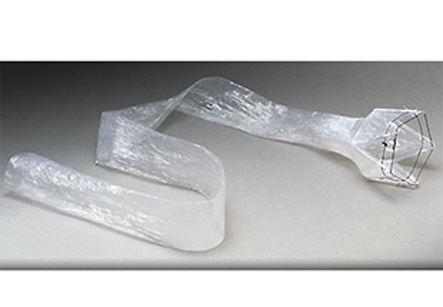Endoluminal Sleeve
Introduction
A newly available incision-free medical device called Endoluminal Sleeve (also known as Endobarrier Gastrointestinal Liner) may offer the benefits of weight loss without undergoing any surgery.
Bariatric surgery is an effective way to lose weight, it helps to maintain achieved weight loss levels and it potentially enhances a risk reduction of diseases directly associated with obesity. Still, just over one percent of obese people who are eligible for weight loss surgery actually opt for it, primarily because some consider bariatric surgery to be too risky and radical. In the end, if the patient is seriously considering endoluminal sleeve or any other type of weight loss surgery, the best way to proceed is always to consult with an experienced doctor first and get advice from bariatric professionals, and investigate the pros and cons of such medical treatment.
Endoluminal sleeve is also referred by many as Endobarrier Gastrointestinal Liner and it can be implanted and removed through the mouth without surgery, it is one of the most innovative approaches to incision-free weight loss treatment. The device lines the upper part of small intestine which includes the duodenum and the first part of the jejunum. This mechanical bypass may alter hormonal responses in the body and results in metabolic changes that lead to the desired body weight loss. And as recent studies show, the endoluminal sleeve procedure is regarded as a possible solution with real potential for type 2 diabetes treatment.
We have all the information you need about public and private clinics and hospitals that provide weight loss surgeries in Iran, Islamic Republic Of with the best quality and lowest possible prices

A multidisciplinary program consisting of diet, exercise and behavior modification may help to maximize the results.
While some individuals may opt for the Endobarrier as their preferred and only method to achieve weight loss, while others use this incision free procedure as a first-step prior to bariatric surgeries such as gastric bypass, gastric banding, duodenal switch or gastric sleeve. Each and every individual must receive a personal and customized assessment as part of the process of deciding the best and most appropriate obesity treatment.
About the endoluminal procedure
Implanting this device is considered to be an outpatient procedure which takes usually about 30 minutes to perform, and the liner is typically removed after three months. Studies about safety and efficacy of keeping the EndoBarrier in place for up to six months are still ongoing at the time of publishing this page. How long does the Endobarrier removal take? Most patient testimonials confirm their surprise when they find out that it takes on average 15 minutes only.
Typical Endoluminal Sleeve results:
International research has shown that people who had the EndoBarrier implanted in their intestine lost around 20 percent of their excess weight within three months and about 30 percent of excess weight is lost within six months, on average. Adding a flow restrictor to the EndoBarrier is proven to actually double the amount of weight loss. A flow restrictor is an adjustable restriction at the outlet of the stomach which slows the speed at which food leaves the stomach and it can be dilated and adjusted if too small.
Like gastric bypass, the new EndoBarrier may help to reverse or improve diabetes. The exact link between the EndoBarrier and diabetes risk is not known at this time, but it is believed that it may alter the activation or levels of hormones which originate in the intestine. Levels of hormones such as insulin (known to be vitally important in diabetes control) may be altered.
As with any weight loss procedure, implantation of Endobarrier is not an instant fix for obesity. A multidisciplinary program consisting of diet, exercise and behavior modification may help to maximize the results. For those with type 2 diabetes, the monitoring of blood sugar levels before, during and after endoluminal sleeve may be also recommended.
Associated risks and considerations
Patients are likely to experience some discomfort or nausea during the first week after the device is placed in the small intestine. If the patient eats too much, vomiting can occur.
So far, studies about endoluminal sleeve patients haven’t shown an increased risk of the dumping syndrome, which occurs when the undigested stomach contents are dumped into the small intestine too quickly. It is marked however, by abdominal cramps, nausea and diarrhea.
Endoluminal sleeve – EndoBarrier Gastrointestinal – is currently only available as a part of clinical trials at the time of publication of this page and it continues to be studied in patients, initial results are very encouraging.